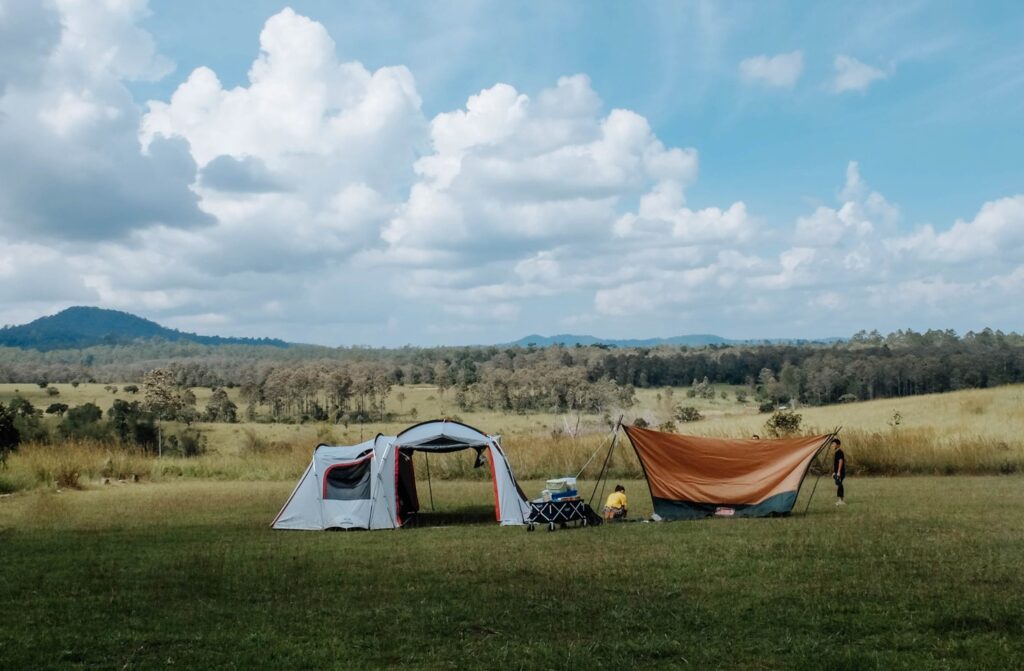Cooking a perfect steak is an art that combines quality ingredients, the right equipment, and proper technique. Here’s a step-by-step guide:
1. Choose the Right Cut:
– Popular steaks for pan-searing or grilling include ribeye, sirloin, filet mignon, T-bone, and New York strip.
– Ensure the steak has a good marbling of fat, which provides flavor and juiciness.
Mega Strip Steak Assortment: A selection of steak, chicken, burgers, sides and desserts for the steak lover!
2. Allow Steak to Come to Room Temperature:
– Remove the steak from the refrigerator about 30-60 minutes before cooking. This ensures even cooking.

3. Preheat the Cooking Equipment:
– For pan-searing: Use a heavy-duty skillet (like cast iron) and heat over medium-high until it’s very hot.
– For grilling: Preheat your grill to high heat.
4. Season the Steak:
– Dry the steak with paper towels to remove any excess moisture. This helps to get a good sear.
– Season generously with coarse salt and freshly ground black pepper. You can also add herbs like rosemary or thyme, or garlic for added flavor.
5. Add Oil (for Pan-Searing):
– If pan-searing, add a high-smoke-point oil (like canola, grapeseed, or avocado oil) to the skillet. Allow it to heat until it’s shimmering but not smoking.
6. Sear the Steak:
– Place the steak in the pan or on the grill. Avoid moving it around so it forms a crust.
– For a medium-rare steak, cook for about 3-4 minutes on each side (adjusting for thickness). The exact time will vary based on the steak’s thickness and your desired doneness.

7. Check for Doneness:
– Use a meat thermometer to check the internal temperature:
– Rare: 120-125°F (49-52°C)
– Medium-rare: 130-135°F (54-57°C)
– Medium: 140-145°F (60-63°C)
– Medium-well: 150-155°F (65-68°C)
– Well-done: 160°F (71°C) and above
– Alternatively, you can use the finger test, but this requires some experience to master.
8. Rest the Steak:
– Once done, transfer the steak to a plate or cutting board and tent it with aluminum foil.
– Let it rest for 5-10 minutes. This allows the juices to redistribute throughout the steak.
Sirloin Steak and Premium Proteins Gift Bundle – bestsellers from Perdue Farms shipped to your door!
9. Slice and Serve:
– If desired, slice the steak against the grain, which makes it more tender.
– Serve immediately with your favorite side dishes.
Tips:
– If you like, you can add butter and aromatics (like garlic or rosemary) to the pan in the last minute of cooking, basting the steak with the melted butter for added flavor.
– Always let the steak rest before slicing to ensure it remains juicy.
– Adjust cooking times based on your preference and the thickness of the steak.
The terms like “medium”, “rare”, etc. refer to the degree of doneness when cooking steak and other meats. The primary distinctions are based on the internal temperature of the meat when it’s removed from the heat and its color and texture. Here are the common levels of steak doneness:
1. Blue Rare or Very Rare:
– Temperature: 115-120°F (46-49°C)
– Description: Just seared on the outside, completely red throughout, cold center.
– Texture: Soft and spongy.
Applewood-Smoked Uncured Spiral Ham – Approx. 8-lb. spiral bone-in slightly sweet, smoky ham
2. Rare:
– Temperature: 120-125°F (49-52°C)
– Description: Seared outside with a bright red, cool center.
– Texture: Soft to the touch.
3. Medium Rare:
– Temperature: 130-135°F (54-57°C)
– Description: Warm, pink center. This is often recommended for steaks because it brings out the best flavor and texture in most cuts.
– Texture: A bit firmer than rare, but still relatively soft.
4. Medium:
– Temperature: 140-145°F (60-63°C)
– Description: Mostly pink with a slight touch of brown.
– Texture: Firmer than medium rare.
Sustainable Salmon with a bulk-pricing discount: Sushi-grade filets responsibly ocean-raised and traceable back to the source!
5. Medium Well:
– Temperature: 150-155°F (65-68°C)
– Description: Mostly brown with a slight hint of pink.
– Texture: Firmer, might be slightly dry.
6. Well Done:
– Temperature: 160°F (71°C) and above
– Description: Browned or charred throughout with no sign of pink. This level of doneness can make the steak dry and tough if not cooked carefully.
– Texture: Firm to hard, depending on the extent of cooking.
It’s important to note that while these are general guidelines, personal preferences can vary, and different cuts of steak might be better suited to different degrees of doneness. Additionally, steaks will continue to cook a bit after being removed from the heat due to residual heat (carryover cooking), so it’s often recommended to remove the steak from the heat a few degrees before it reaches your desired temperature.
Related Posts
Cooking 101: Essential Tips and Techniques for BeginnersCooking is a wonderful skill that brings joy and satisfaction to your daily life. As a beginner, it's essential to start with the basics and gradually build your culinary expertise. Here are some essential tips and techniques to get you started in the kitchen: 1. Start with Simple Recipes: Begin with easy-to-follow recipes that have fewer ingredients and straightforward instructions. As you gain confidence, you can move on to more complex dishes. 2. Preparation is Key: Mise en place, a French term meaning "everything in its place," is crucial. Before you start cooking, gather and prep all your ingredients. Chop vegetables, measure spices, and have everything within arm's reach. 3. Use the Right Tools: Invest in basic kitchen tools like a chef's knife, cutting board, pots, pans, and measuring cups. Quality tools will make your cooking experience more enjoyable and efficient. 4. Master Knife Skills: Learn basic knife techniques like…
Dapper and Suave: Types of Suits for Men and 20 Tips on How to Choose the Perfect SuitThe suit is a classic and timeless ensemble that exudes elegance and sophistication. Whether you're attending a formal event, a business meeting, or a special occasion, wearing the perfect suit can make a powerful and lasting impression. In this article, we'll explore the various types of suits for men and provide 20 essential tips on how to choose a suit that fits impeccably and complements your style. Types of Suits for Men: 1. Single-Breasted Suit: The single-breasted suit is a versatile and popular choice. It features a single row of buttons and is suitable for various occasions. 2. Double-Breasted Suit: The double-breasted suit is more formal and stylish, with two parallel rows of buttons on the front. 3. Three-Piece Suit: A three-piece suit includes a matching vest, adding an extra layer of elegance and formality to the ensemble. 4. Tuxedo: A tuxedo, also known as a dinner suit, is the…
20 tips for eco-friendly lifestyle1. Reduce, reuse, and recycle 2. Use eco-friendly cleaning products 3. Use biodegradable or reusable bags for shopping 4. Walk, bike, or use public transportation instead of driving 5. Buy local and organic produce 6. Conserve water by taking shorter showers and fixing leaky faucets 7. Use energy-efficient light bulbs and appliances 8. Compost food and yard waste 9. Avoid single-use plastic products 10. Use a reusable water bottle 11. Buy products with minimal packaging 12. Use a cloth napkin instead of paper 13. Shop at thrift stores and consignment shops instead of buying new clothing 14. Collect rainwater for gardening 15. Use natural pesticides and fertilizers in the garden 16. Buy products made from sustainable materials 17. Turn off electronics when not in use 18. Reduce meat consumption 19. Use a programmable thermostat to conserve energy 20. Support companies and brands that prioritize sustainability.
20 tips to increase your wellbeing1. Practice gratitude daily 2. Get enough sleep 3. Stay hydrated 4. Exercise regularly 5. Connect with nature 6. Spend time with loved ones 7. Listen to music 8. Laugh and have fun 9. Practice mindfulness and meditation 10. Try new things 11. Spend time doing what you love 12. Volunteer or help others 13. Cut back on alcohol and tobacco 14. Eat a balanced and healthy diet 15. Establish a daily routine 16. Learn a new skill 17. Manage stress 18. Set realistic goals and prioritize tasks 19. Maintain healthy boundaries 20. Seek professional support when needed
20 tips to improve your golfing skills1. Develop a consistent pre-shot routine 2. Learn proper grip technique 3. Practice putting regularly 4. Work on your swing plane 5. Improve your balance 6. Learn to control your tempo 7. Get fitted for clubs that match your swing 8. Focus on proper alignment 9. Spend time practicing your short game 10. Analyze your swing with video analysis 11. Control your breathing for better focus 12. Play with better golfers to push yourself 13. Learn to control your shot shape 14. Work on your mental game with visualization techniques 15. Strengthen your core for more power 16. Consider taking lessons from a professional coach 17. Use training aids to improve your swing 18. Play more rounds to gain experience 19. Stretch before playing to avoid injury 20. Stay patient and focused on the process, not just the outcome.
20 useful legal tips1. Always consult with a qualified attorney before signing any legally binding documents or contracts. 2. Keep thorough and accurate records of all legal and financial transactions. 3. Familiarize yourself with the laws and regulations relevant to your business or personal circumstances. 4. Review and update your estate plan regularly to ensure that it accurately reflects your wishes and current circumstances. 5. Protect yourself and your assets by obtaining adequate insurance coverage. 6. If you are involved in a legal dispute, consider alternative dispute resolution methods, such as mediation or arbitration. 7. Be mindful of the statute of limitations for filing legal claims in your jurisdiction. 8. Be cautious when discussing legal matters with others, as your communications may be subject to legal privileges or confidentiality protections. 9. Always disclose any relevant information to your attorney, as failing to do so could harm your case or result in legal penalties.…
20 tips for the night skincare1. Cleanse your face thoroughly to remove all makeup, dirt, and oil. 2. Use a gentle cleanser that is suitable for your skin type. 3. Exfoliate once or twice a week to remove dead skin cells. 4. Apply a toner to balance your skin's pH level. 5. Use a serum to target specific skin concerns. 6. Apply eye cream to the delicate skin around your eyes. 7. Use a face oil to boost your skin's hydration and nourishment. 8. Apply a moisturizer to lock in all the goodness. 9. Use a sleep mask to give your skin an extra boost of hydration. 10. Use a lip balm to keep your lips soft and moisturized. 11. Try a facial massage to improve circulation and firm your skin. 12. Use a jade roller to reduce puffiness and promote lymphatic drainage. 13. Apply a spot treatment to target any blemishes. 14. Don't forget…
20 tips to create a secure password1. Use a mix of capital and lowercase letters. 2. Include numbers and special characters. 3. Don't use common words or phrases. 4. Don't use easily guessable personal information. 5. Use at least 12 characters. 6. Don't use the same password for multiple accounts. 7. Use a password manager. 8. Update your passwords regularly. 9. Set up two-factor authentication. 10. Don't write your password down. 11. Use a random password generator. 12. Avoid using dictionary words. 13. Mix in alternative characters like $, %, and *. 14. Use a passphrase that is easy to remember. 15. Avoid using the names of loved ones or pets. 16. Consider using a passphrase with spaces. 17. Avoid using sequential characters like 1234 or abcd. 18. Consider using different languages in your password. 19. Mix in uppercase letters in the middle of your password. 20. Use the first letter of each word in a…
20 styling tips to wear stilettos1. Start with simple heels before moving on to more complex styles. 2. Choose heels that complement your outfit and avoid wearing heels with patterns that clash with your outfit. 3. Extend the life of your favorite heels by taking good care of them. 4. Match the material of your heels to the material of your clothing. 5. Invest in a comfortable pair of insoles to ease foot pain. 6. Use double-sided tape if your heels are loose or if you're worried about slipping. 7. Break in new heels ahead of time to avoid foot blisters. 8. Stick to neutral heels that match many outfit colors. 9. Dress up causal outfits with heels for a more polished look. 10. Avoid wearing heels on slippery surfaces or uneven terrain. 11. Choose a heel height depending on the occasion. 12. Choose heels that suit your foot shape. 13. Wear lighter colors in…
20 tips for your outdoor activities1. Plan your activity in advance. 2. Check the weather forecast before heading out. 3. Dress appropriately for the weather and activity. 4. Wear proper footwear. 5. Bring a map and compass or GPS device. 6. Bring plenty of water and snacks. 7. Apply sunscreen and insect repellent. 8. Know and follow the rules and regulations of the area. 9. Leave no trace – pack out what you pack in. 10. Use proper safety equipment for the activity, such as a helmet or life jacket. 11. Bring a first aid kit. 12. Have a backup plan in case of emergency. 13. Watch out for hazards, such as slippery rocks or loose soil. 14. Stay on designated trails and paths. 15. Stay hydrated and take breaks as needed. 16. Respect wildlife and their habitat. 17. Be mindful of the environment and avoid damaging it. 18. Let someone know where you are…




